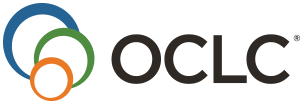Calidad y perfil del profesor universitario
DOI:
https://doi.org/10.22335/rlct.v6i1.212Palabras clave:
docencia, calidad, productividad, sistema e indicadores.Resumen
La investigación se desarrolla en un enfoque mixto, combina el paradigma cuantitativo con la finalidad de conseguir patrones de regularidad, y el cualitativo en cuanto a nivel de técnica y estrategia de captura de información, con las entrevistas a profundidad, y también a nivel del análisis de datos, e interpretación de los resultados en la reducción, disposición y transformación de los mismos, a los fines de obtener de la experiencia de los cuatro grupos etarios de educadores; la investigación se realizó con 120 docentes de la Universidad Nacional Experimental del Estado Táchira. La investigación desarrolla los aspectos teóricos de los constructos perfil del docente, en el marco de constructo calidad en la docencia. Plantea como objetivo general diseñar e implementar un sistema de medición de la calidad en la docencia universitaria. Conclusión: la implementación del sistema permitió la formulación, ejecución y seguimiento de programas, orientados a la formación del personal académico para contribuir a mejorar la calidad de la docencia.
Descargas
Referencias
Acevedo, D. (2004). Metodología para la generación e interpretación de indicadores de gestión y resultados. Caracas, Venezuela: Ministerio de Educación Cultura y Deportes.
Alarcón, N. & Méndez, R. (2000). Calidad y productividad en la docencia de la educación superior. Recuperado el 2 de septiembre de 2003, de http://www.monografias.com/trabajos10/ponenc/ponenc.shtml
Albornoz, O. (1997). La cuestión de la productividad, rendimiento y competitividad académica del personal docente y de investigación en América Latina y el Caribe. En L. Yarsabal (Ed.), Educación Superior en el siglo XXI: Visión de América Latina y el Caribe (pp. 391-421). La Habana, Cuba: CRESAL/UNESCO.
Beltrán, J. (1998). Indicadores de gestión. Santafé de Bogotá, Colombia: 3R editores.
Campbell, D. & Stanley, J. (1995). Diseños experimentales y cuasiexperimentales en la investigación social (M. Kitaigoradzki & J. C. Orries e I. Bars, Trads.). Buenos Aires, Argentina: Amorrortu. (Trabajo original publicado en 1966).
Contreras Bello, Y. (2012). Bases de la Investigación Cualitativa, técnicas y procedimientos para desarrollar una teoría fundamentada. Autores: Anselm Strauss y Juliet Corbin. Universidad de Antioquia, Colombia, 2012. Revista Logos Ciencia & Tecnología, 3(2), 172-173. doi:http://dx.doi.org/10.22335/rlct.v3i2.166
Correa de Molina, C. (2010). Auto-organización curricular en el contexto de la emergencia de una ética global: formación del estudiante y calidad de la educación. Revista Logos Ciencia & Tecnología, 1(2), 86-94. doi:http://dx.doi.org/10.22335/rlct.v1i2.51
Hernández, R. (2002). Contribuciones al análisis estadístico. Merida, enezuela: Universidad de Los Andes, Facultad de Ciencias Jurídicas.
Hernández, R., Fernández, C. & Baptista, P. (2001). Metodología de la investigación (2a. ed.) México: Esfuerzo.
Padrón, J. (2000). Seminario de epistemología y educación. Manuscrito no publicado, Universidad Pedagógica Experimental Libertador. Rubio, Venezuela.
Martínez. M. (1999). Método hermenéutico-dialéctico en las ciencias de la conducta. Anhtropos, 10(18), 85-111
Rey, D. (2004). La gestión tradicional y la gestión por procesos. Recuperado el 25 de julio de 2005, de http://www.gestiopolis.com/recursos4/docs/ger/gestitra.htm
Rusque, A. (1999). De la diversidad a la unidad en la investigación cualitativa. Caracas, Venezuela: FACES/UCV.
Salkind, N. (1999). Métodos de investigación (3a. ed.). (R. Escalona, Trad.). México, México: Prentice Hall Hispanoamericana. (Trabajo original publicado en 1998).
Sánchez, J. (2001). Apuntes de estadística. Manuscrito no publicado. Universidad Nacional Experimental del Táchira. San Cristóbal, Venezuela.
Scheaffer, R., Mendenhall, W. & Ott, H. (1987). Elementos de muestreo. (G. Sánchez & J. Gómez, Trads.). México, México: Grupo Editorial Iberoamérica. (Trabajo original publicado en 1986).
Descargas
Publicado
Número
Sección
Licencia
Esta revista provee acceso libre e inmediato a su contenido (https://creativecommons.org/licenses/by-nc-nd/4.0/), bajo el principio de hacer disponible gratuitamente la investigación al público y apoyar a un mayor intercambio de conocimiento global.
































